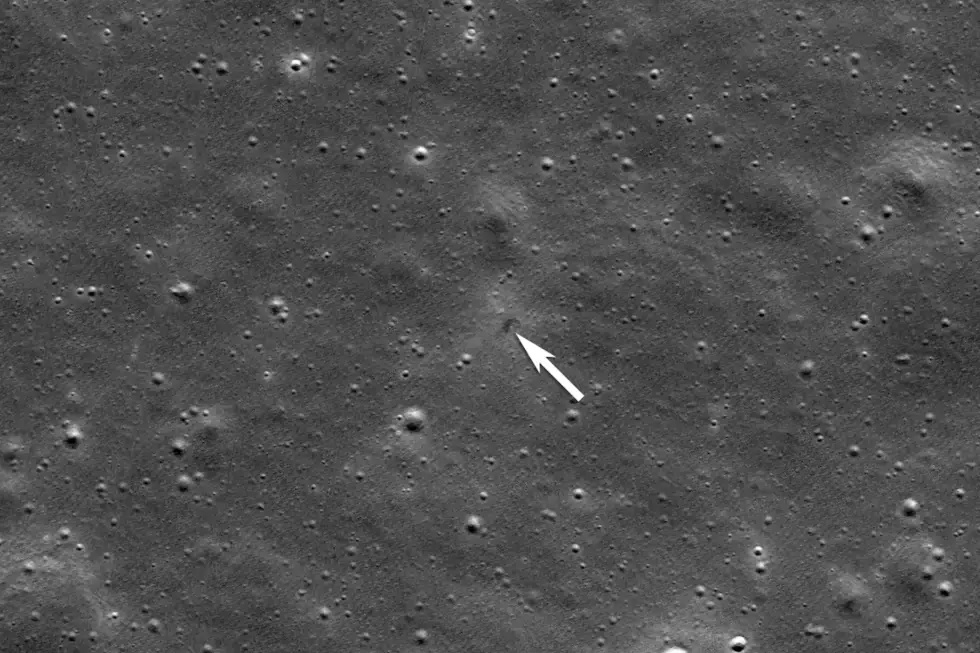
Pic shows crash site of Japanese lunar lander on Moon
In a setback for space exploration, a Japanese company’s lunar lander, named Resilience, and its mini rover crashed into the Moon’s surface in the Mare Frigoris or Sea of Cold, a volcanic region in the far north. The crash site was captured by NASA’s Lunar Reconnaissance Orbiter (LRO) around the Moon, providing a glimpse into the aftermath of the failed mission.
This is the second failure in two years for Tokyo-based ispace, which had aimed to make history by becoming the first private company to land a spacecraft on the Moon. The company’s previous mission, dubbed HAKUTO-R1, also ended in failure when it failed to enter lunar orbit in 2020.
The Resilience lander, which was carrying a mini rover and several scientific experiments, was intended to study the Moon’s surface and subsurface. It was launched in December 2022 and had entered into lunar orbit before attempting to land on the Moon’s surface. However, something went wrong, and the lander lost contact with Earth before it could successfully touch down on the lunar surface.
The crash site, captured by NASA’s LRO, shows a large crater with debris scattered around it. The LRO, which has been orbiting the Moon since 2009, has provided a wealth of information about the Moon’s surface, including its topography, composition, and geological history.
The Mare Frigoris, where the crash occurred, is a vast, dark plain that covers nearly a third of the Moon’s surface. It is a relatively young feature, formed as a result of ancient volcanic activity. The region is also home to several prominent mountain ranges, including the Apennine Mountains, which are visible from Earth as a bright, rugged line on the Moon’s surface.
Despite the failure of the Resilience mission, ispace remains committed to its lunar exploration program. The company has already announced plans to launch another lunar mission, dubbed HAKUTO-R3, in 2024, which will aim to land on the Moon’s surface and deploy a series of scientific instruments.
The crash site captured by NASA’s LRO provides valuable insights into the Moon’s surface and the challenges of space exploration. The Moon’s surface is a harsh environment, with temperatures ranging from -243°C to 127°C (-405°F to 261°F) and with no atmosphere to protect spacecraft from radiation and extreme temperatures.
The failure of the Resilience mission also highlights the risks involved in space exploration. Despite advances in technology and engineering, space missions can still fail due to a variety of factors, including equipment malfunction, software glitches, and human error.
However, the crash of the Resilience lander also underscores the importance of perseverance and the need to learn from failure. Ispace has already begun investigating the cause of the crash and is working to improve its designs and procedures for future missions.
The Lunar Reconnaissance Orbiter, which captured the images of the crash site, has been an invaluable asset for NASA and the global scientific community. Launched in 2009, the LRO has provided a wealth of information about the Moon’s surface, including its topography, composition, and geological history.
The LRO has also played a key role in supporting NASA’s lunar exploration program, including the Artemis mission, which aims to return humans to the Moon by 2024. The mission, which will establish a sustainable presence on the Moon, will require a deep understanding of the Moon’s surface and subsurface, which the LRO will continue to provide.
In conclusion, the crash of the Japanese lunar lander, Resilience, and its mini rover on the Moon’s surface is a setback for space exploration, but it also highlights the importance of perseverance and the need to learn from failure. The crash site captured by NASA’s Lunar Reconnaissance Orbiter provides valuable insights into the Moon’s surface and the challenges of space exploration, and serves as a reminder of the importance of continued investment in space exploration and lunar research.
Sources:
https://photojournal.jpl.nasa.gov/spacecraft/Lunar+Reconnaissance+Orbiter






